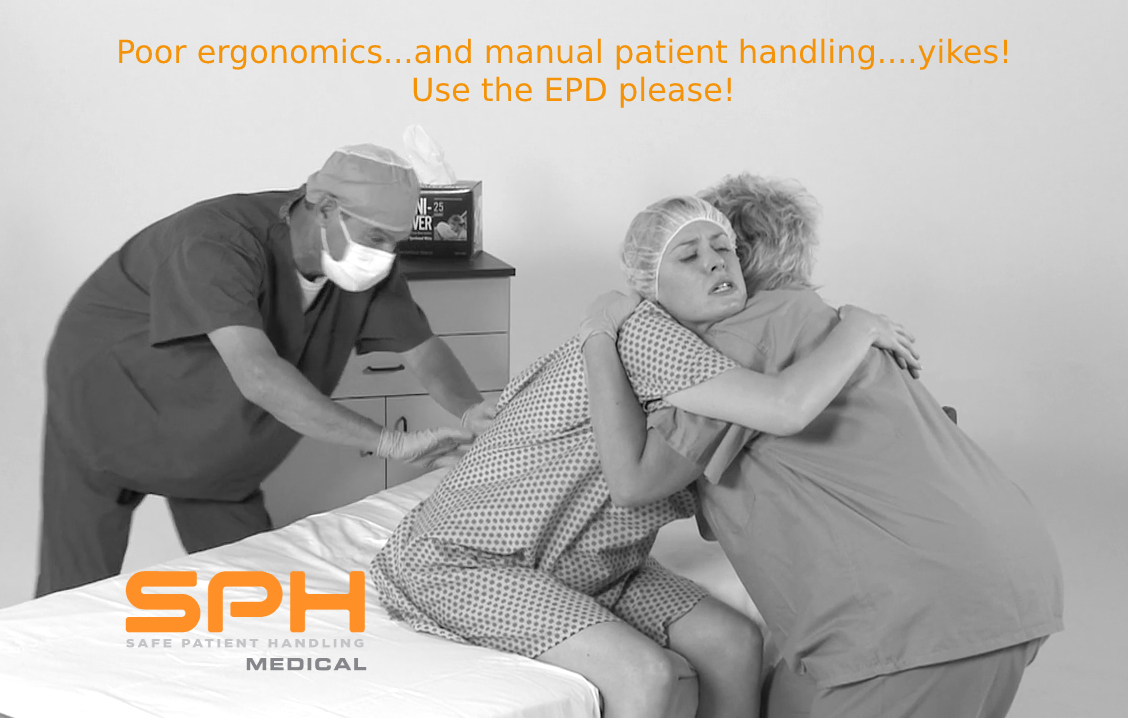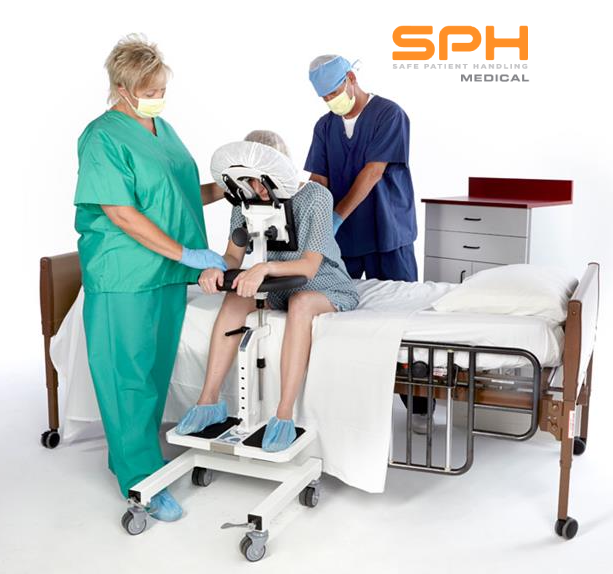In the high-pressure environment of healthcare, the physical demands placed on nurses, operating room (OR) nurses, and imaging technicians during procedures such as epidurals, spinal blocks, and thoracentesis are immense. These tasks often require sustained awkward postures and manual patient handling and support, which can lead to significant musculoskeletal injuries. Enter the SPH Medical Epidural Positioning Device (EPD), a groundbreaking solution designed to mitigate these risks while enhancing patient care and operational efficiency.
Improving Staff Safety
The risk of injury to healthcare staff during patient handling is well-documented. According to the Bureau of Labor Statistics, nurses and related healthcare workers have some of the highest rates of musculoskeletal injuries among all professions, primarily due to patient handling tasks. The SPH Medical Epidural Positioning Device addresses this by providing a stable, ergonomic platform for patient positioning and support, thereby reducing the physical strain on healthcare professionals. Experts in ergonomics highlight that the design of the EPD minimizes awkward postures and the need for manual support, significantly lowering injury risks to healthcare workers. A notable example is a major hospital that reported a 30% reduction in staff injuries after incorporating the EPD into their procedures. All too often hospitals wait and react to injuries after they occur. However the benefits of the Epidural Chair by SPH Medical are taking hold across the country and more hospitals are taking a proactive approach to injury prevention.
Enhancing Patient Satisfaction with The SPH Medical Epidural Positioning Device
Patient comfort and security during procedures are paramount. The EPD not only enhances safety for nurses but also provides an unparalleled level of comfort and stability for patients. Patients have reported feeling more secure and less anxious during procedures when the EPD is utilized, leading to higher patients satisfaction scores. Patient satisfaction has always been important but increasingly more so in today’s quality driven environment. Healthcare providers note that the device’s adjustable features cater to a wide range of patient sizes and needs, ensuring a customized and comfortable patient experience.
Boosting Operational Efficiency
Beyond safety and satisfaction, the SPH Medical Epidural Positioning Device significantly boosts operational efficiency. By standardizing and streamlining the positioning process, the device reduces the time required for each procedure, allowing for higher patient throughput. A case study from a busy urban hospital showed that using the EPD cut down the average procedure time by 15%, enabling the facility to handle more cases and reduce patient wait times, ultimately increasing turnover rates and improving resource allocation.
Addressing Concerns and Misconceptions
Despite its benefits, some misconceptions about the EPD persist, particularly regarding its integration into existing workflows. However, these concerns are easily addressed. The EPD is versatile and user-friendly, designed to seamlessly integrate into various procedural settings without disrupting established protocols. Its intuitive operation ensures that staff can easily adopt the device with minimal training, as demonstrated by facilities that have successfully incorporated it into their daily routines.
Implementation Strategies with The SPH Medical Epidural Positioning Device
To maximize the benefits of the EPD, hospitals should consider a quick start implementation strategy. This includes online video learning followed by hands on education for staff, emphasizing the functional, ergonomic and operational advantages of the device. Furthermore, leveraging resources to train future staff is made easy by using the online inservice videos and peer leader cross training can facilitate greater confidence by staff. By sharing success stories from early adopters within the hospital, facilities can foster a positive attitude toward adopting this innovative tool.
In conclusion, the SPH Medical EPD represents a pivotal advancement in healthcare safety and efficiency. By reducing the risk of injury to nurses and enhancing patient comfort and satisfaction, it offers a dual benefit that is hard to overlook. Healthcare facilities are encouraged to explore the integration of the EPD as a strategic investment in both staff safety and patient care excellence. As the demands on healthcare systems continue to increase, tools like the EPD are essential in creating a safer and more efficient environment for both caregivers and patients.








